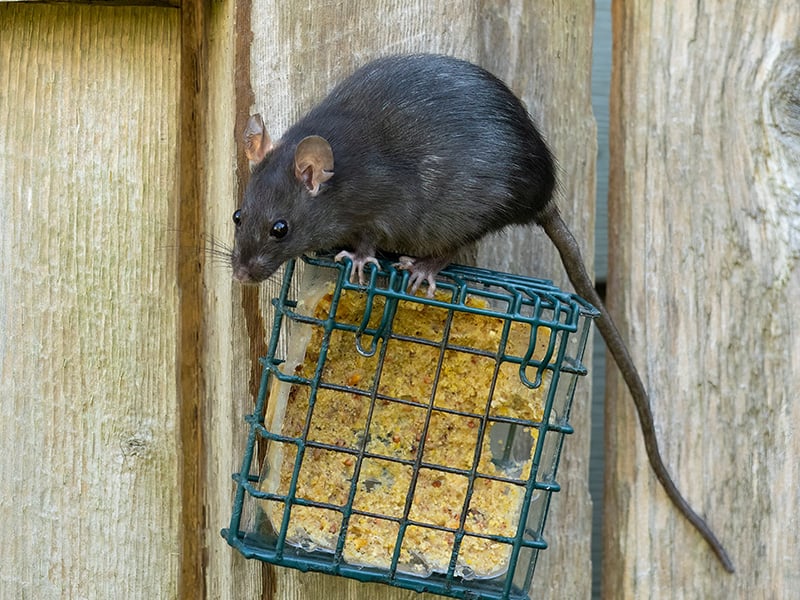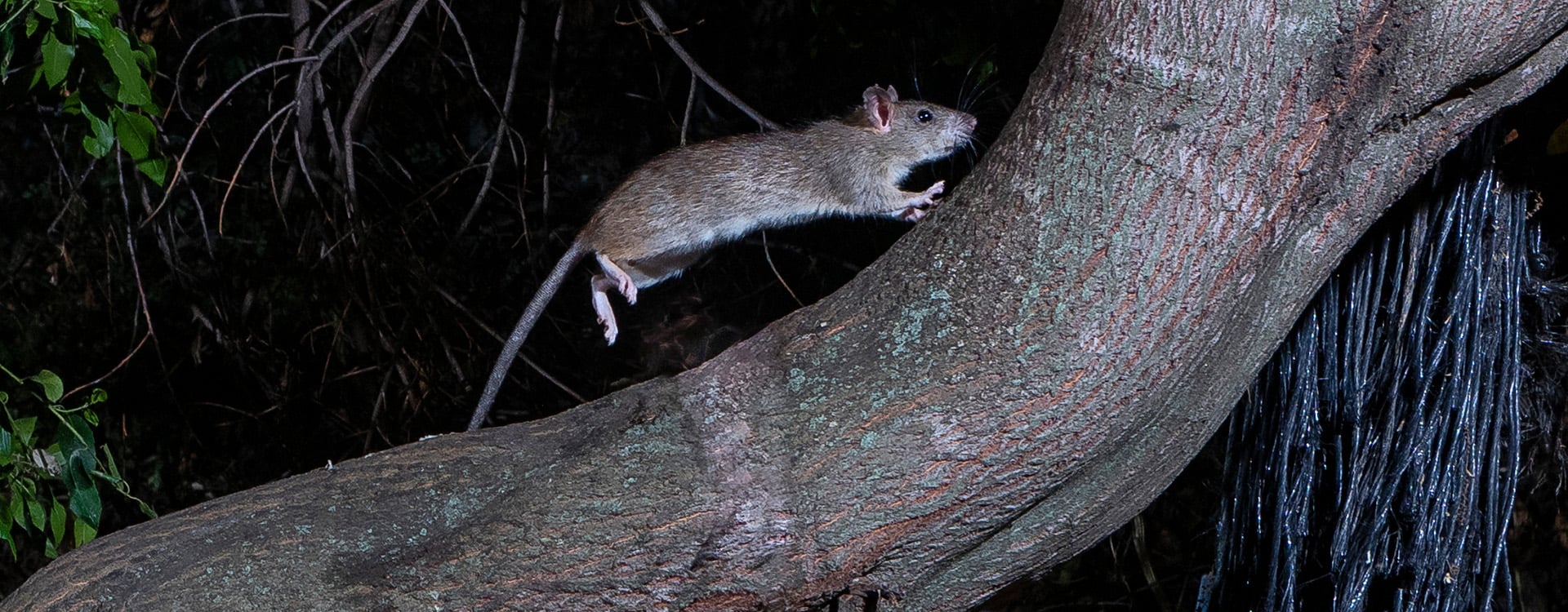What do roof rats look like?
Roof rats are medium-sized rodents with smooth, dark brown or black fur, sometimes with scattered gray hairs. They have lighter coloring on their bellies. Roof rats have large ears, pointed noses, and scaly tails that are longer than their bodies. An adult roof rat measures about 12-16 inches in length from nose to tail.

When are roof rats most active?
Where do roof rats nest?
Roof rats are very agile and good climbers. They prefer to nest in the attics or upper levels of buildings and often gain access inside homes and businesses through the roof, hence their name.
Outside roof rats will nest in trees. They may also burrow under sidewalks or among yard debris.
What attracts roof rats?
Like most rodents, roof rats are omnivores and feed on various foods; however, fruits are a favorite and main staple of a roof rat’s diet. Orchards and yards with fruit trees are especially attractive to roof rats.
Other things that attract these hungry pests as they offer them a source of food include livestock feed, pet food, birdseed, trashcans, gardens, and compost bins. They are also a massive problem in orchards.
Are roof rats dangerous?
Roof rats are carriers and spreaders of diseases, bacteria, and parasites, which can lead to health issues. They are also destructive rodents that gnaw through wires, pipes, drywall, insulation, and other building materials. Their presence inside homes and businesses has the potential to compromise health, create fire hazards, and cause property damage.
How do I get rid of roof rats?
If you've noticed roof rat activity in your home or business, contact Lindsey Pest Services for effective rodent control in Greater Jacksonville, along the First Coast, and throughout NE Florida. When you reach out for help, we will accurately identify the rodent problem and evaluate the severity of the infestation. From there, we'll develop and implement a treatment plan that may include trapping, population management, and exclusion services.
Get Your Free Pest Control Quote Today!
Complete the form below to get started with your free, no-obligation quote, and a Lindsey Pest representative will contact you shortly.
Same Day Service Available!









